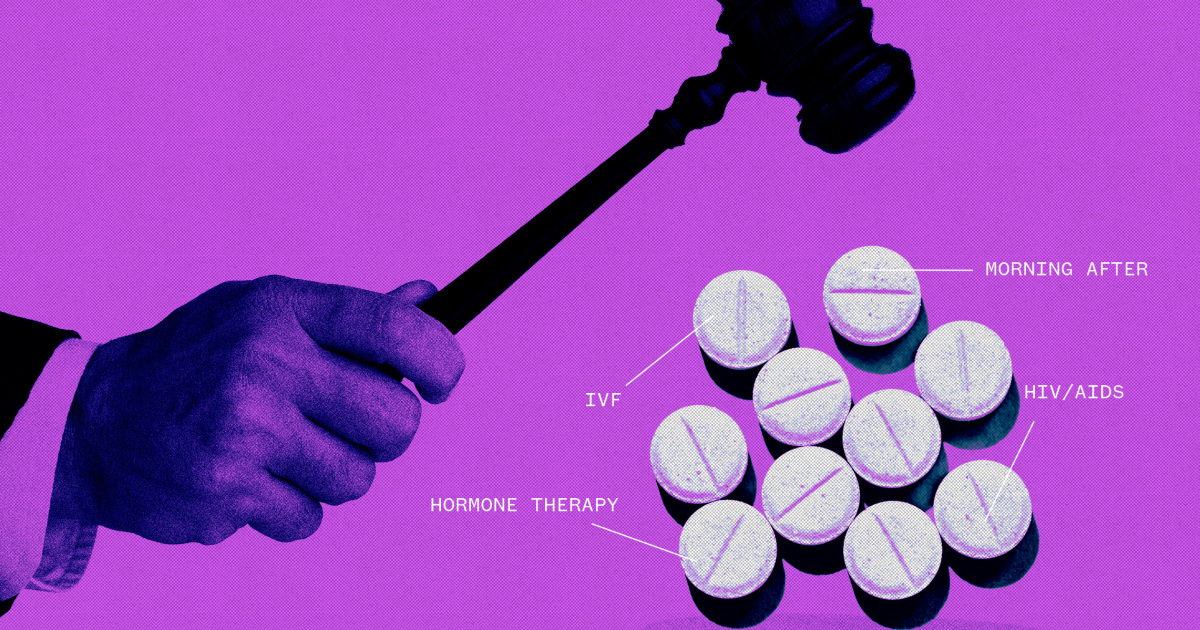Several states will protect access to abortion despite the Court's ruling 1:31
(CNN) --
The Supreme Court decision that struck down Roe v.
Wade, the case that established the federal right to abortion means that access to medical abortions could become more important than ever.
Some states have restricted the practice, but in December the US Food and Drug Administration (FDA) eased some of the federal regulations for the most common method of abortion in the United States.
What is medical abortion?
Medical abortion, also known as chemical or medical abortion, is a method of terminating a pregnancy using two medications, rather than a surgical procedure.
The first drug is mifepristone, available under the brand names Mifeprex or Korlym, in the United States.
It is also known as RU 486. The second drug is called misoprostol.
What is it like to have an abortion in Texas, a state where it is prohibited?
5:34
How does it work?
Mifepristone blocks a hormone called progesterone, which the body needs for the pregnancy to progress.
The hormone helps maintain the inner part of the uterus.
When the hormone is absent, the uterus will expel its contents.
4After taking mifepristone, the patient waits 24 to 48 hours to take misprostol.
This drug helps empty the uterus through bleeding and muscle contractions.
advertising
The drugs usually cause severe cramping and heavy bleeding for 3 to 5 hours.
The patient will recover her usual menstrual cycle in a few weeks.
Within the first 2 weeks after taking the medications, the patient will return to a health clinic or doctor's office for a follow-up appointment.
The doctor or manager will perform a laboratory test or ultrasound to confirm that the abortion is complete.
They will also check the patient to verify that an infection has not occurred.
When can you have a medical abortion?
The drugs can be taken immediately after a person finds out she is pregnant, up to 11 weeks after her last menstrual period, depending on where she lives.
State laws vary.
Can you get pregnant after using this method?
Yes, but a person taking these medications must use some form of birth control for at least one month after the event.
OPINION |
The real reason America is going against the grain on abortion
When was the process approved?
The FDA approved the joint use of mifepristone and misprostol for use in abortions in 2000. This combination is also available in more than 60 countries.
In 2016, the FDA approved the Mifeprex manufacturer's companion application to change the mode of administration and the drug's label.
Who should not opt for this method?
Medical abortions should not be taken if it has been 70 days or more since the last menstrual period.
Some people with certain medical conditions or who have previously had an ectopic pregnancy, a rare case in which the fertilized egg implants outside the uterus, should not opt for medical abortion.
It is also not recommended for those who have an IUD (intrauterine device) for contraception, although the device can be removed before the procedure.
People who have been on long-term treatment with corticosteroids and who are allergic to the drugs or similar medications should also not use this method.
People with anemia can take the medications, but may require closer monitoring because of the heavy bleeding they cause.
How many people use this method?
The number of people who resort to abortion in general has decreased, according to the US Centers for Disease Control and Prevention (CDC, for its acronym in English).
But the percentage of people who use drugs has increased among those who choose an abortion.
A study published in February by the Guttmacher Institute, a reproductive rights think tank, found that about 54% of people chose this method in 2020. By comparison, in 2017 only 39% opted for medication.
How to get the medicines?
Unlike most drugs you can get at any nearby pharmacy, the drugs used for medical abortion can only be prescribed and dispensed by a licensed health care provider.
Since 2011, the drugs have come from a restricted program called the Mifepristone Shared REMS Program.
REMS stands for “Risk Evaluation and Mitigation Strategy” in English, a program used by the FDA for certain drugs to ensure that their benefits outweigh the associated risks.
Medications are usually on this schedule because they have complications or contraindications.
There are 62 drugs on REMS programs, including some drugs for cancer, multiple sclerosis, antipsychotics, opioids, and testosterone.
Drugs in this program usually require a provider to be certified to administer them, and some require the provider to follow a specific patient education plan on how the drug works.
Are the rules of access to drugs the same throughout the United States?
Access to drugs is not the same in all states.
In April 2021, the FDA allowed medical abortion medications to be shipped through the mail during the COVID-19 pandemic and said it would not require women to take the first medication in person at a clinic or hospital.
In December, the FDA removed the requirement that mifepristone be distributed only in certain health centers and added a certification requirement for pharmacies to distribute it.
FDA says abortion pill can be mailed
As of April 2022, 33 states allow only licensed physicians to prescribe mifepristone.
Seven states have laws that require health care providers to explain to patients that the process can be reversed if they take a large amount of progesterone, although scientific evidence does not support this claim.
Similar laws in Arizona and North Dakota have been deferred in court.
The American College of Obstetrics and Gynecology and other medical associations have advocated removing restrictions on drug administration.
The group argues that the restrictions "do not make care safer, are not based on evidence or medical necessity, and create barriers to access to medical abortion drugs for both patient and physician."
Does it have side effects?
Studies show that this method of abortion is considered safe and highly effective.
Common side effects include vomiting, diarrhea, nausea, weakness, and dizziness.
These usually happen in the first 24 hours after taking the second drug.
Rare side effects include a fast heart rate, fainting, and fatal infections.
There is a 0.4% risk of major complications.
The associated mortality rate is less than 0.0001% according to studies.
What if it doesn't work?
The chemical method is 99.6% effective, according to studies, if the drugs are taken within the first nine weeks of pregnancy.
At weeks 9-10, it works in 91% to 93% of cases;
in weeks 10 to 11 it has an effectiveness of 87%.
If the abortion is not complete, the patient may take the medication again.
In some rare cases they will have to undergo a surgical abortion.
AbortionSupreme Court















